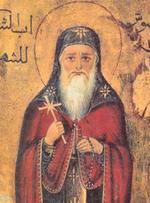Matching Books to Readers, II: Stroik’s The Church Building as a Sacred Place
By Dr. Jeff Mirus ( bio - articles - email ) | Mar 21, 2013 | In Reviews
Duncan Stroik has, over the past several decades, led a crusade to restore a sense of the sacred to Church architecture, gradually forcing the Modernists into retreat and establishing a beachhead of spaces clearly set apart for God for the purpose of communicating the mysteries of Faith. A leading professor and practicing architect, Stroik also implemented a new curriculum in classical architecture at the University of Notre Dame beginning in 1990. He has articulated his vision, and stimulated a renaissance of Church architecture in the United States, not only through his designs and his teaching, but through a series of important essays in various journals over the years.
Most great architects do not write much; Stroik is a treasured exception. But architecture is a visual medium, and Stroik knows its principles must be communicated not only in words but also in pictures of architectural examples. That’s why his essays on key themes in sacred architecture have been collected into something of a coffee table book, replete with over 170 photographs to illustrates his themes. And his themes are important. The books’ subtitle is “Beauty, Transcendence, and the Eternal”.
This is a book I have already dipped into with great pleasure; I may or may not in time drink the well dry. I mention with regret that I am unable to take time all at once to digest nearly 200 oversize pages on architectural principles, even when punctuated with such impressive visuals. But those for whom sacred architecture is a more central concern, those who wish to understand what is so profoundly wrong with too many churches designed and built in the twentieth century, and those who want to learn how Church buildings can once again participate in and foster the fundamentally incarnational character of our Faith—all of these will take genuine delight in these cogent essays and their accompanying examples of sacred spaces, some successful and some not.
In saying this book is right for some and not for others, I do not wish to be misunderstood. These essays are not technical essays; they are accessible to anyone deeply interested in the subject matter. To make this clear, it may be useful to enumerate the four parts into which the collection is divided: The Church as a Sacred Place: Principles of Church Design; Church Architecture Today; From Bauhaus to God’s House: Modernism and Modernity; and finally, Renaissance and Renewal. Some of the essays set forth basic principles, others critique Modernism or define the Classical approach, still others explore the fundamental purposes of sacred architecture, and two essays even explore the contributions of popes John Paul II and Benedict XVI.
The collection closes with advice to pastors and laity who wish to renovate or build (chapter 22) and with prophecies about the future of Catholic architecture (chapter 23). Useful appendices list canonical Church documents and explore the proportionate size measurements of various great churches over the centuries and around the world, and also of the baldacchinos (altar canopies) in Rome.
The publisher, Hillenbrand Books, is an imprint of Liturgy Training Publications and the Liturgical Institute at the University of Saint Mary of the Lake, an extension of the Archdiocese of Chicago, which holds the copyright. This in itself says something about the progress of Catholic renewal in the United States. In this same spirit of authentic renewal, Duncan Stroik outlines his purposes in the preface, identifying clearly what the reader can expect to gain:
This book seeks to offer timeless principles which are crucial for church architecture today. First of all, I try to redefine our goal as the creation of sacred architecture, rather than merely the construction of “worship spaces.” Then I will consider how the Classical Tradition can inform our contemporary churches. A series of essays analyze the legacy and continued impact of Modernism on our philosophy and aesthetic choices. The concluding essays consider church architecture through the lens of “renaissance,” which has been a recurring theme throughout the past two millennia.
And remember, The Church Building as a Sacred Space also invites browsing.
See also Matching Books to Readers, I: Monti’s A Sense of the Sacred.
All comments are moderated. To lighten our editing burden, only current donors are allowed to Sound Off. If you are a current donor, log in to see the comment form; otherwise please support our work, and Sound Off!
-
Posted by: John J Plick -
Mar. 22, 2013 3:21 PM ET USA
So far as the "incarnational" aspect of our Faith goes, I believe "human" temples desperately need to be emphasized over those of brick, stone, marble etc. There are already myriad Catholic expressions of art... Vast Cathedrals in Europe that stand virtually empty... Where are ones such as Francis, a beggar among beggars, or a Father Damian, a leper among lepers..., or even a Mother Theresa, a poor person among the poor?








